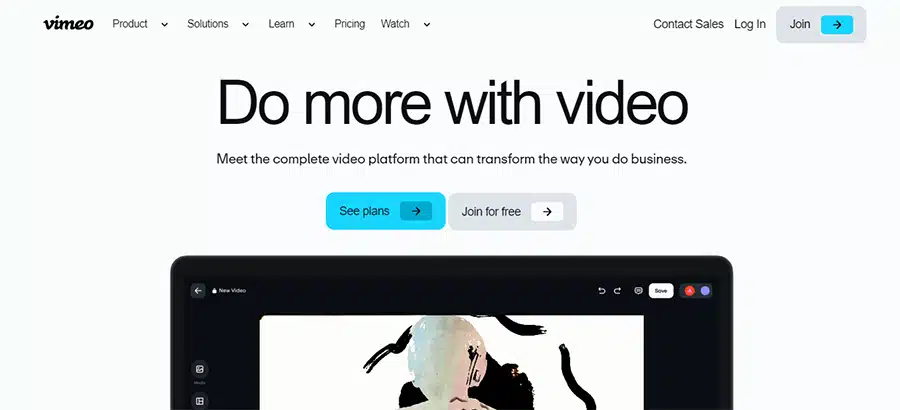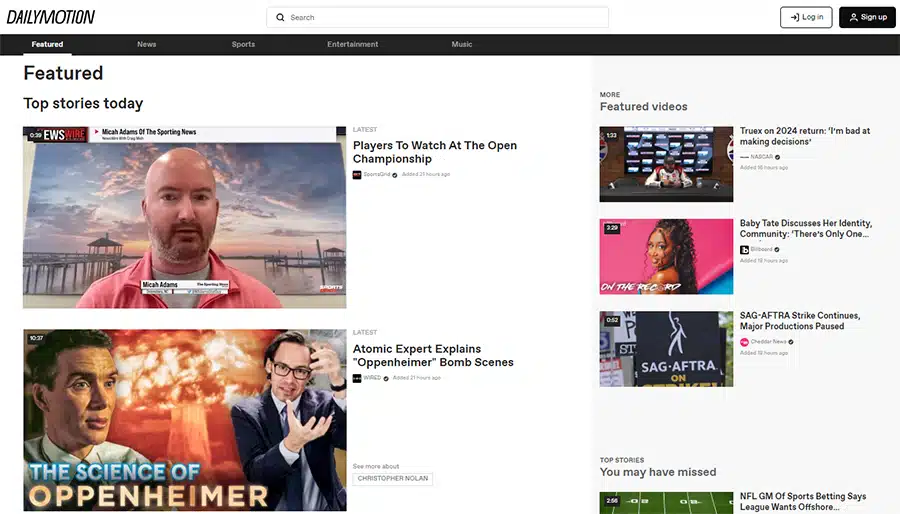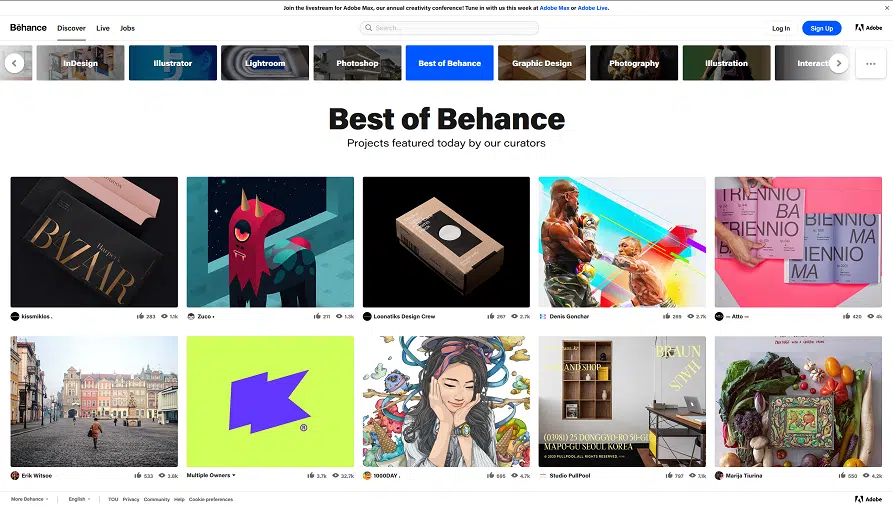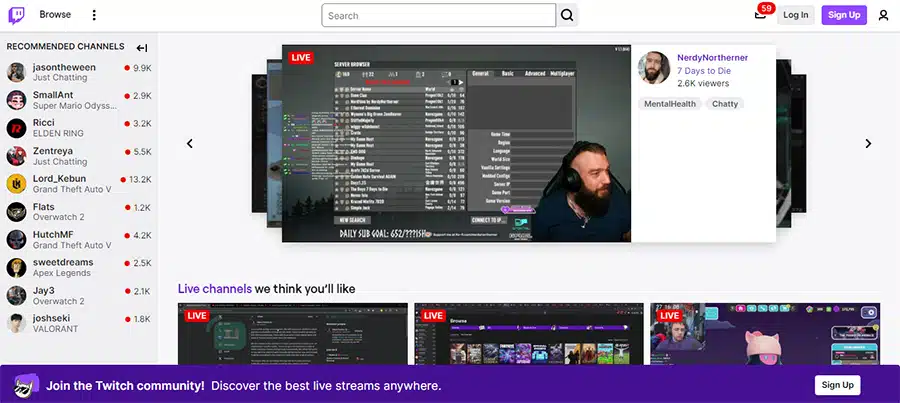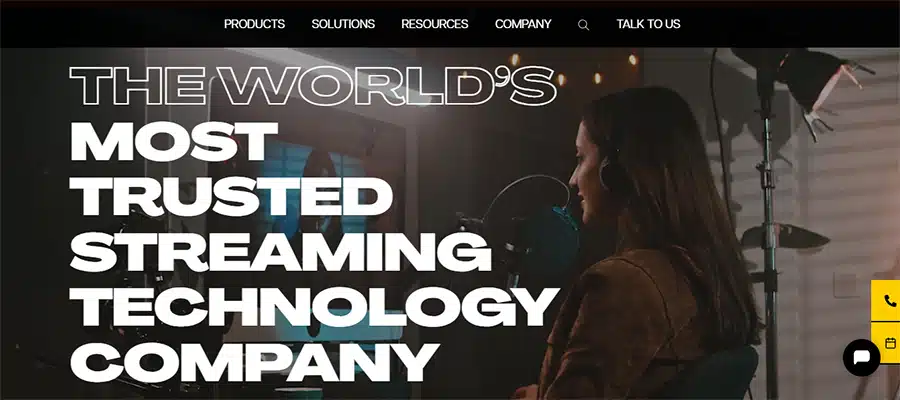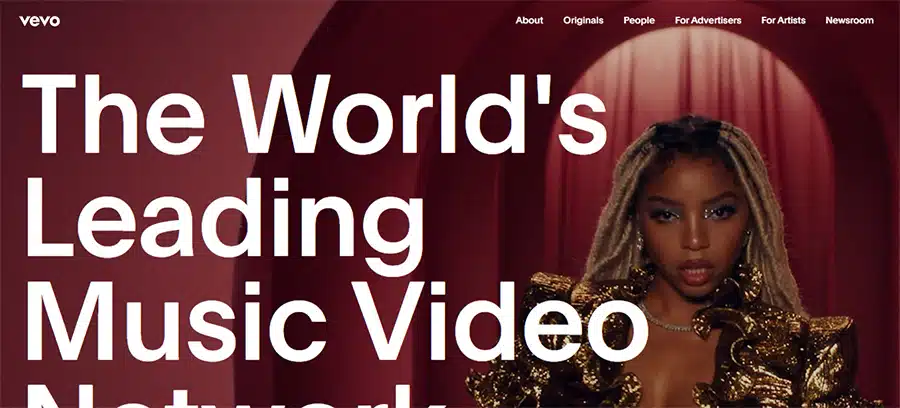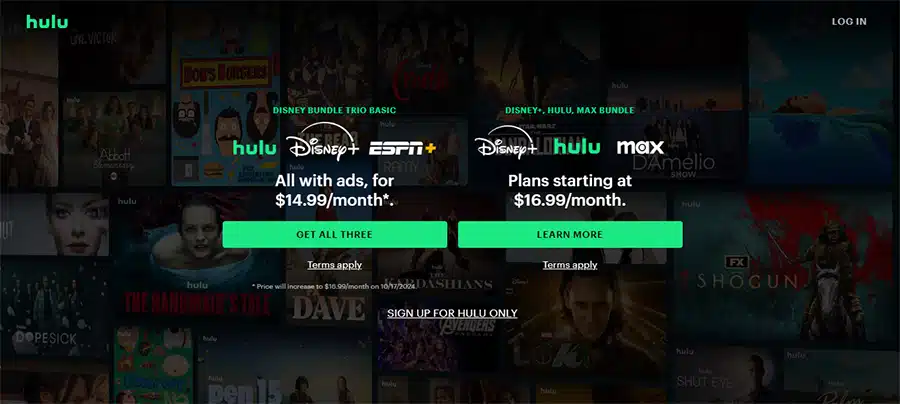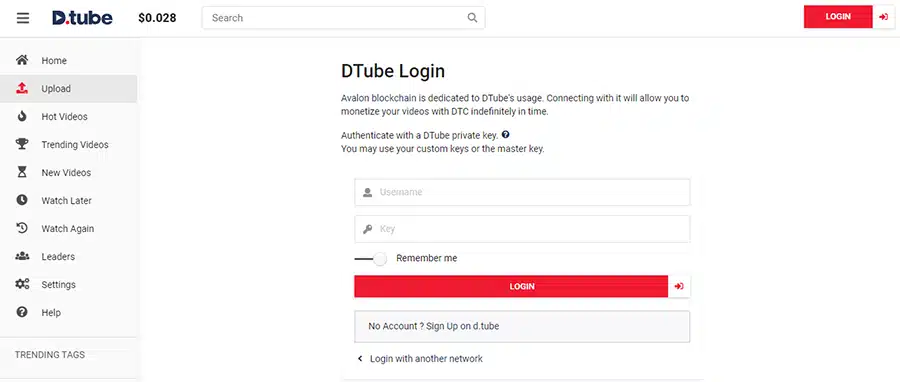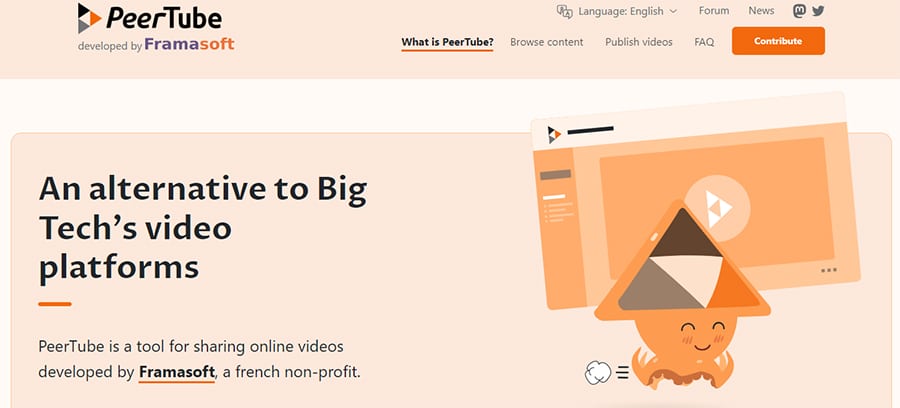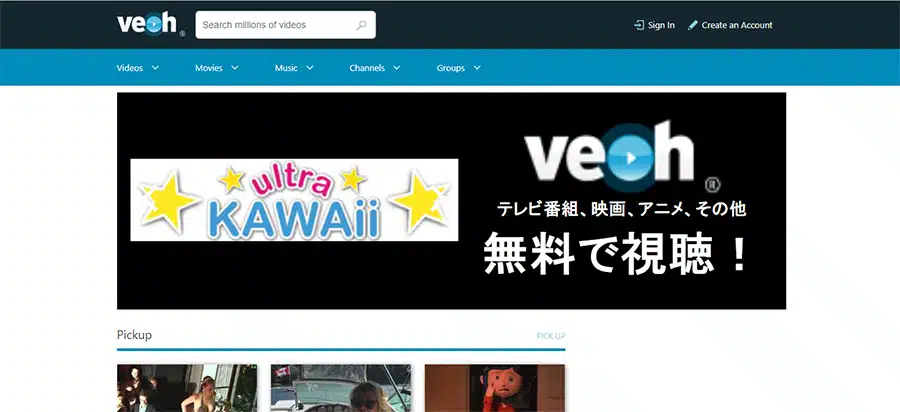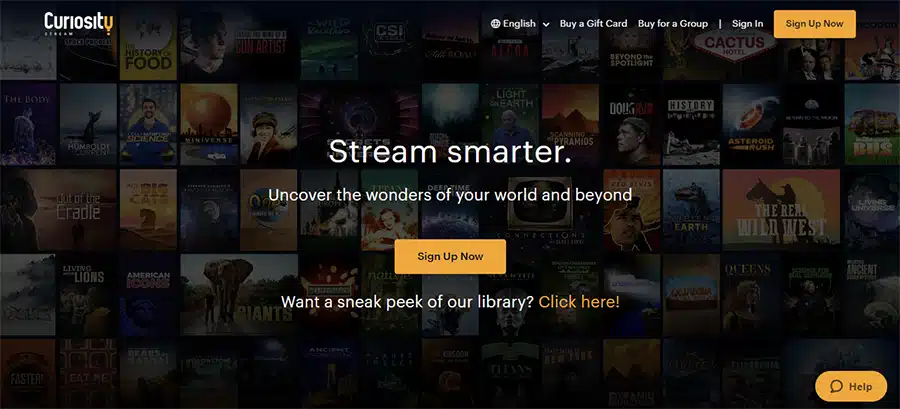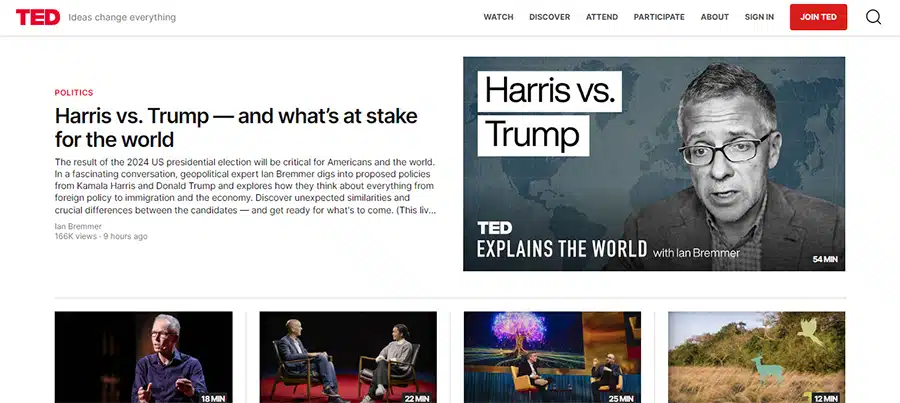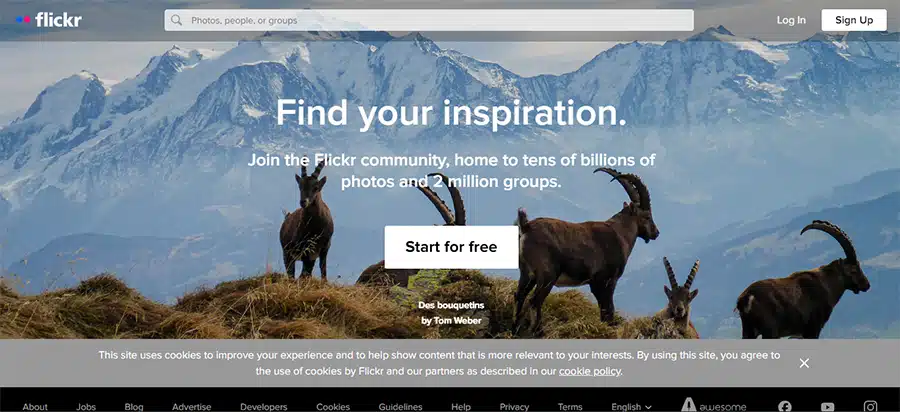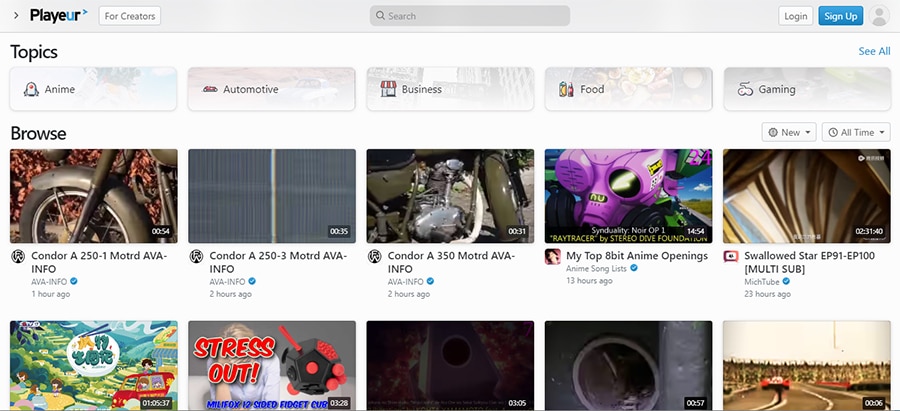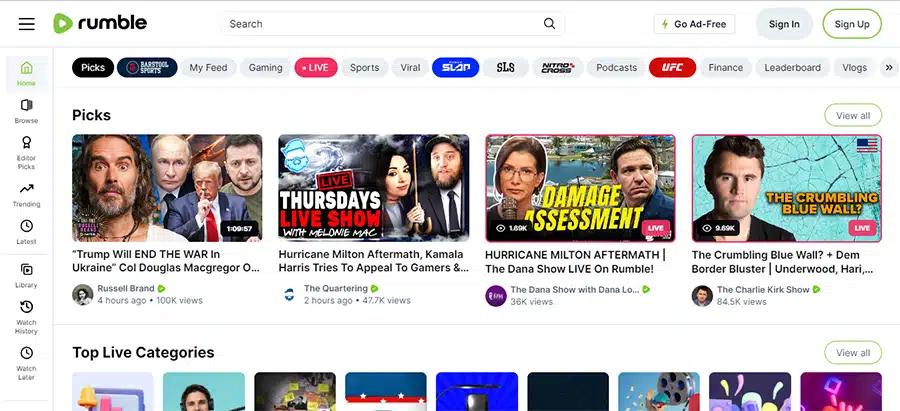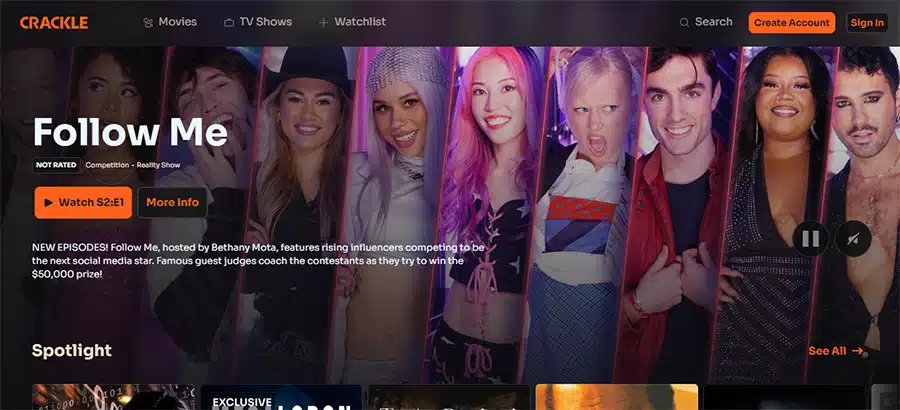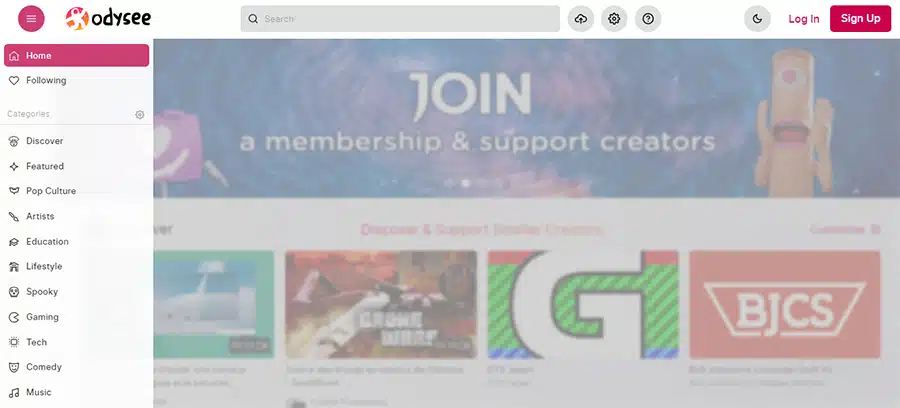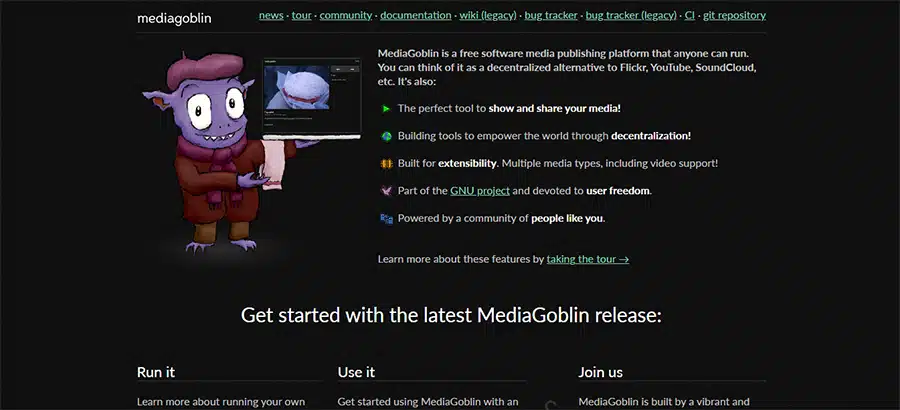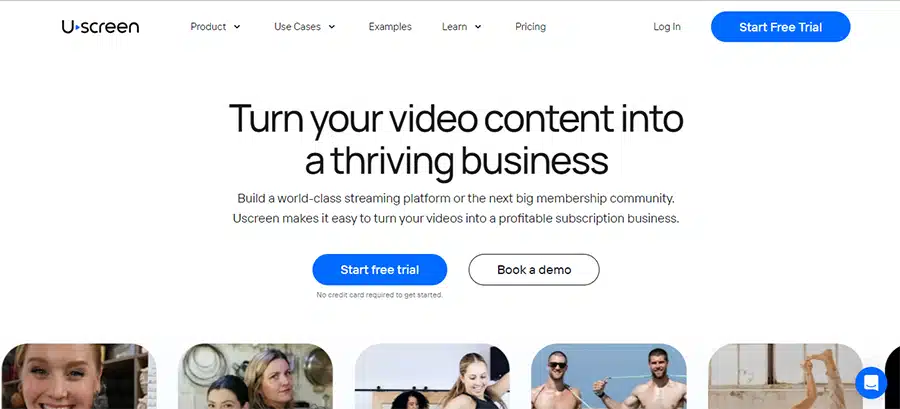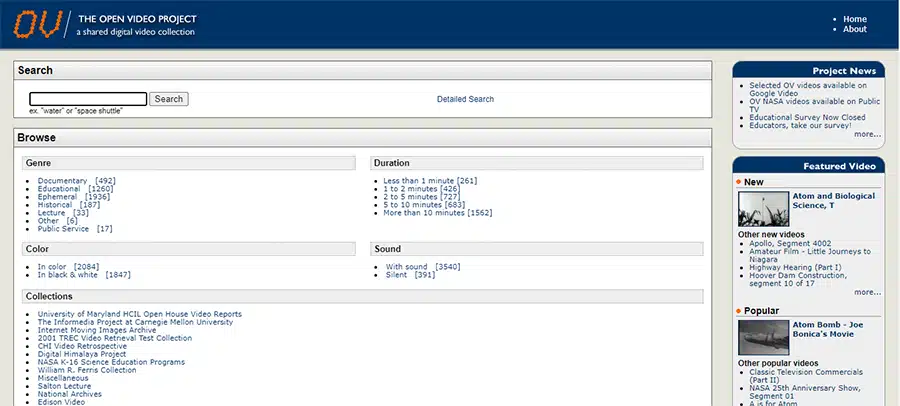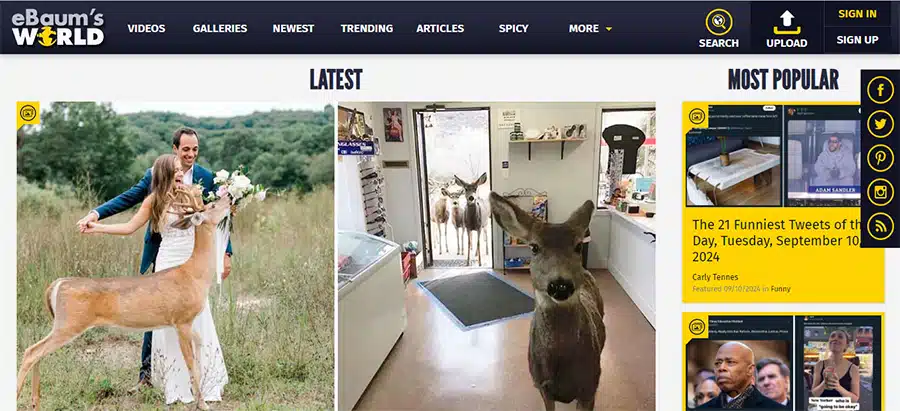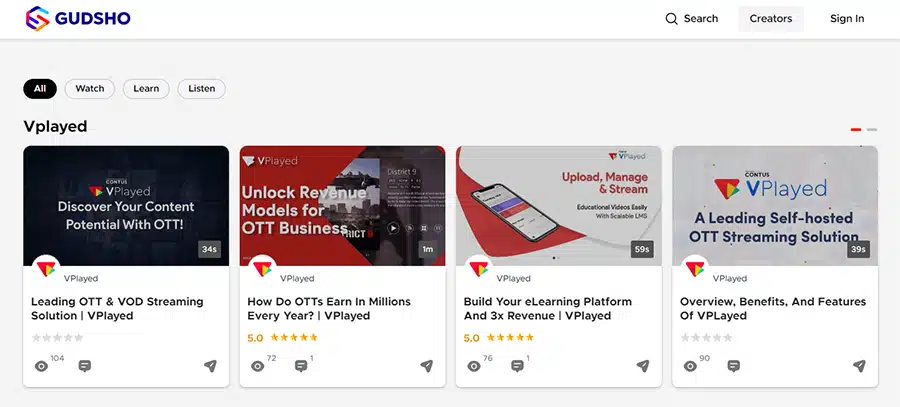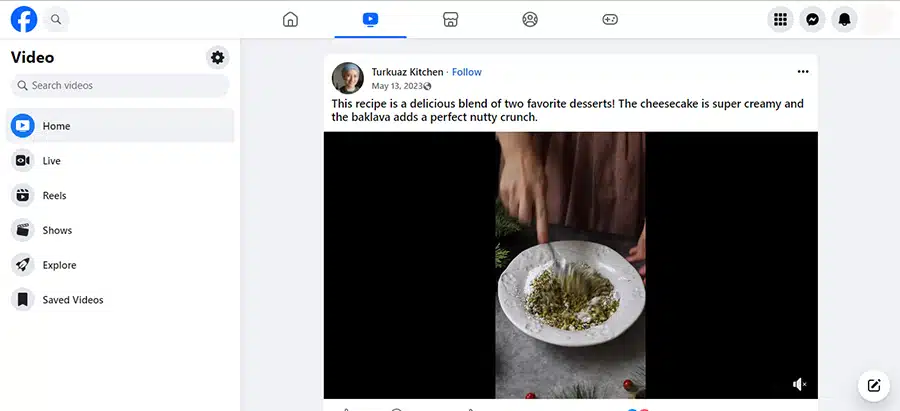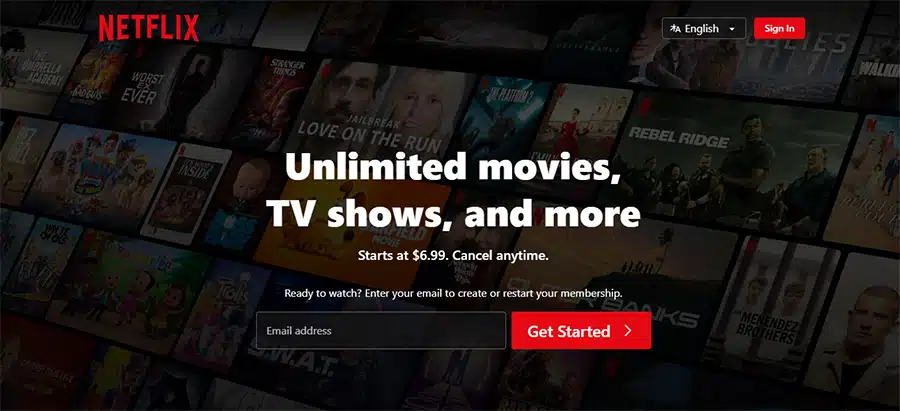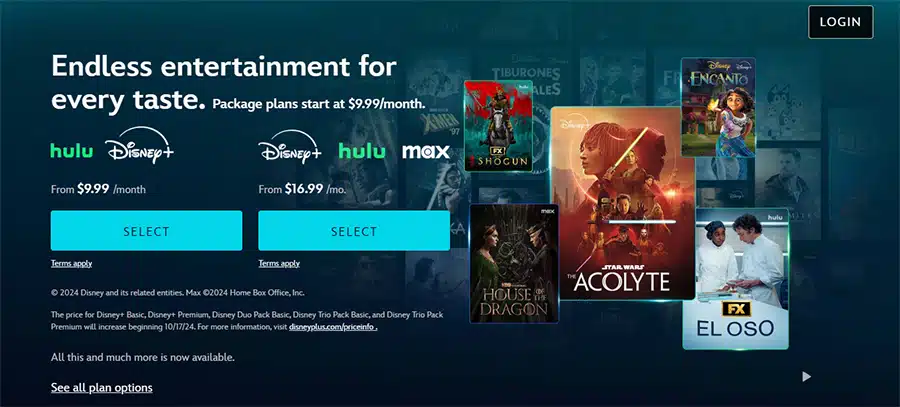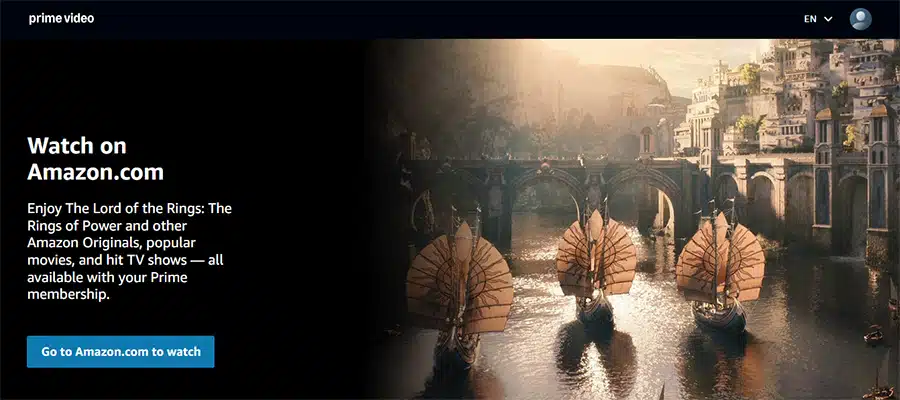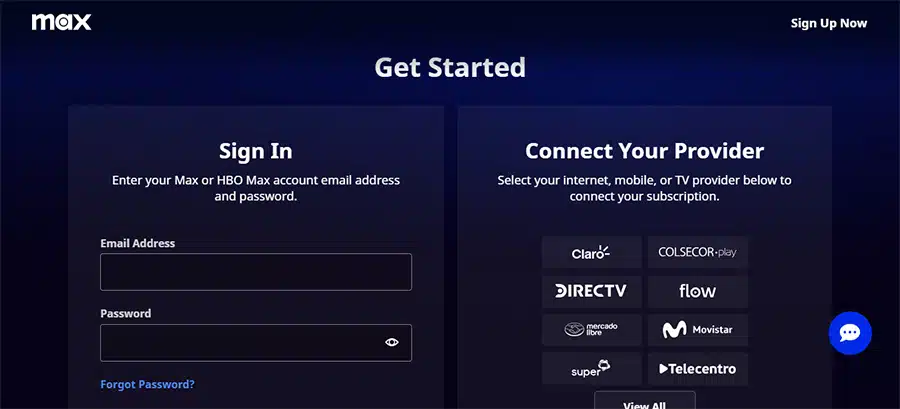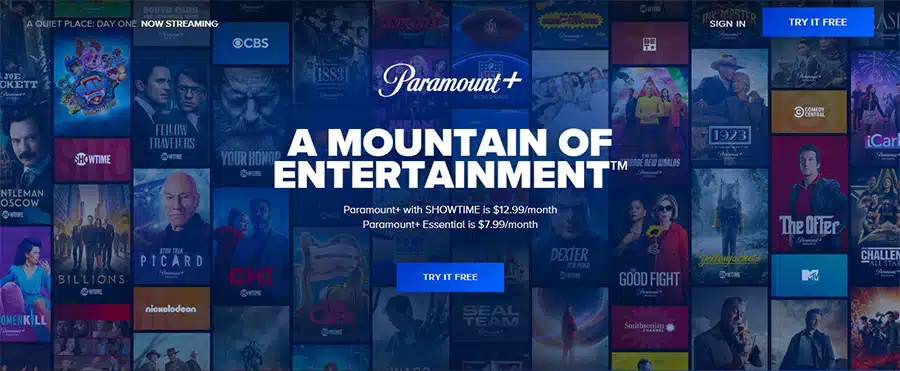The 25 Best Video Websites Like YouTube You Still Don’t Know (2025)
30/12/24
Author: Carmen Coto
20 min reading
DistributionMarketing

When you think about video websites, YouTube is probably the first thing that comes to mind. It’s no surprise —YouTube is the go-to video site for most people, offering a massive library of content.
But did you know there are plenty of other great video sites where you can find amazing videos that are not on YouTube? These platforms come with unique features and content that make them stand out.
Whether you’re an Explainer Video company like us (read review), a content creator, or simply someone who loves exploring new video websites, it’s worth checking out some of these fantastic alternatives.
Ready to discover something new? Here’s our list of the 25 best video sites that aren’t YouTube. Enjoy!
The 25 Best Video Websites That Aren’t YouTube
Let’s not keep you waiting any longer—here are our top video sites for finding amazing videos that are not on YouTube:
Table of Contents
1. Tik Tok
2. Vimeo
3. Dailymotion
4. Behance
5. Twitch
6. Brightcove
7. Vevo
8. Hulu
9. Dtube
10. PeerTube
11. Veoh
12. Curiosity Streams
13. TED
14. Flickr
15. Utreon/Playeur
16. Rumble
17. Crackle
18. Odysee
19. MediaGoblin
20. Uscreen
21. The Open Video Project
22. The Internet Archive
23. eBaum’s World
24. GUDSHO
25. Facebook Watch
1. TikTok

Let’s start by stating the obvious —TikTok isn’t just a video website like YouTube. Having taken the world by storm, TikTok stands now as one of the fastest-growing video hosting and social media platforms out there. In fact, many valuable YouTube video ideas nowadays first started as viral TikTok trends.
As you might well know, TikTok is used to create short lip-sync, comedy, and talent videos that appeal to younger demographics looking for snippet-based entertainment!
How big is it? Well, it boasts over 1,582 billion monthly users and more than 700 million videos are uploaded to the platform per month. It has definitely entered the social media big league, and it’s here to stay!
2. Vimeo : A Top Video Website and YouTube Alternative
You’ve probably heard of this one already, right? Vimeo is one of the most well-known video sites and a top alternative to YouTube, especially popular among artists and filmmakers.
Renowned for its high-quality content and highly engaged community, this video website attracts an audience that truly values exceptional film quality.
Unlike video websites like YouTube, Vimeo is a platform that encourages creative professionals to showcase their best work. You won’t find ten-hour videos of a bear dancing to “Sweet Dreams” here. Instead, you’ll discover compelling short films, professional explainer videos, and other high-quality, portfolio-worthy content.
If you’re looking for a video hosting site to proudly display your work, Vimeo is the perfect place!
3. Dailymotion
Dailymotion is another video website that has a really similar structure and interface to YouTube. You can find trending videos on the homepage or discover more through the categories section and the search bar.
This online video website has a more flexible copyright policy than YouTube, though, so there is better tolerance for content uploaders. Maybe this is why it has around 450 million visitors per month!
Another thing that makes Dailymotion special is the fact that users can monetize their videos through ads or a paywall. This is why you’ll find some videos with ads, and others completely free. However, this is an optional feature, and the users who upload the videos can choose whether to monetize them.
4. Behance
Behance is not just another video website —it’s owned by Adobe Inc., and like most services this firm offers, it’s meant for creative professionals.
Everyone in the creative field, from architects to game designers, can use this platform as a portfolio to show off their skills. It’s a great way of putting their work out there and gaining visibility by amassing likes and even feedback.
What sets Behance apart from a site like YouTube is that it allows not only video uploads but also photos and illustrations. It isn’t a free video hosting site either, as it’s part of Adobe Creative Cloud plans. Still, you can upload a portfolio at no charge, but the features options will be limited.
5. Twitch : A Unique Video Website for Gamers and Streamers
If you’re searching for video websites similar to YouTube, Twitch might not seem like the ideal choice—unless you’re into gaming!
This popular video hosting site focuses primarily on live-streaming videos of gamers and eSports competitions. However, it’s not limited to just gaming. DJs, artists, and other creators also use Twitch to broadcast live sets and other streaming content in real-time.
What sets this video site apart is its ability to foster vibrant digital communities. With live chat features, viewers can interact with each other and streamers during events, creating a dynamic and engaging experience for everyone involved.
6. Brightcove
Being one of the oldest video hosting sites out there (since 2004), Brightcove offers a wide variety of video management tools for businesses. It allows them to manage their video marketing strategy efficiently by making tasks simpler.
With Brightcove, you can edit a video, upload it to different social platforms simultaneously, and analyze its overall performance in every channel. It’s not necessarily an alternative to YouTube, as you can share a Brightcove video there too!
That said, Brightcove’s most remarkable feature is by far its HTML5 video player. The video site claims it’s 70% faster than any other player out there and can be used in every type of screen available.
7. Vevo : A Dedicated Music Video Website
Vevo is a video entertainment site designed exclusively for music videos.
Launched in 2008 by major record labels, Vevo quickly rose to prominence, branding itself as “the world’s largest all-premium music video provider.”
While it could be seen as a competitor to YouTube, Vevo has a syndication deal with the platform, meaning many of its videos are also available on YouTube. This partnership has become Vevo’s primary focus.
Although the standalone website has lost some of its popularity over the years, it remains a great video site for music enthusiasts who want a platform solely dedicated to high-quality music content. However, keep in mind that most videos will redirect you to a YouTube tab.
8. Hulu
Hulu is a video website that distributes and produces on-demand movies and series. It also offers a special service (Hulu + Live TV) in which users can enjoy television content transmitted through Internet protocols (IPTV).
The site is mainly owned by The Walt Disney Company but provides content from various other networks as well.
You may find Hulu similar to other sites like YouTube, such as Netflix and Prime Video. Yes —these three major OTT video streaming sites have various things in common and can be easily compared to each other. Hulu is the most economical site of the bunch, although it’s worth noting that, unlike Netflix and Prime Video, its lower-cost plans involve ads.
9. Dtube
At first glance, you may think Dtube is just another non-YouTube video website, but that would be doing the platform a disservice.
Dtube is a decentralized platform that uses a social blockchain system where every user interaction is end-to-end encrypted. There’s no central figure controlling what users are posting, so they have more independence and control over their content. As a result, Dtube is censorship-free, and every uploaded video remains there forever.
The best part of this innovative video website is that users earn rewards for posting, curating, and voting content. The rewards come in the form of Dtube’s own cryptocurrency, DTC.
10. PeerTube
This is another decentralized video hosting site, but it doesn’t work in the same way that Dtube does.
Peertube is a software platform that uses a peer-to-peer system in which users can create a server that hosts particular users and content. This server is called an instance and can be hosted by people with moderate technical skills. Every instance can be moderated and maintained independently by various administrators at the same time.
According to Peertube, this results in a network of interconnected small video hosters with a lot of freedom over their content, something that’s hard to find on video websites like YouTube.
11. Veoh
Veoh is a video website similar to YouTube that not only hosts user-generated videos but also offers TV shows (only in the U.S.) and full-length movies from major studios or independent productions.
To watch full-length videos, though, viewers have to install the Veoh Web Player within their browser.
12. Curiosity Streams
Curiosity Streams is not really a website like YouTube but it is similar to Netflix, Hulu, and Prime Video, as it’s a subscription-based video streaming site. However, Curiosity Streams’ content differs significantly from the one you’ll find on other platforms.
This site is devoted to original and third-party documentary films, series, and short videos. It was launched by the founder of the Discovery Channel —so you can say it’s in the service’s DNA.
Luckily, Curiosity Streams is included among other platforms’ services, such as YouTube TV, Apple TV, and Amazon Prime Channels, so it’s easy to access. On its own, the streaming service offers both traditional quality and 4K plans – perfect for enjoying wildlife documentaries.
13. TED: A Unique Video Website for Inspiring Talks
TED is an award-winning video website managed by the non-profit TED Foundation.
While its interface resembles video platforms like YouTube, its content stands apart. TED offers thousands of recorded talks by world-renowned thought leaders, covering topics such as technology, design, science, politics, and humanitarian issues.
Most TED talks on the site are free and accessible to everyone, though some videos are reserved for members. A TED membership provides access to exclusive content and enables users to engage in discussion groups. The membership fee functions as a donation, allowing users to choose their contribution, either monthly or annually.
Although many TED talks are available on YouTube, this video site serves as a fantastic alternative for those looking to explore inspiring content on other platforms.
14. Flickr
This website started as a place for photographers worldwide to share their art, but nowadays you can also upload video content along with your photos.
The community is as strong as ever, and the platform allows you to customize your profile to introduce yourself to fellow photographers (professional or hobbyists!) before exhibiting your creations.
You can choose a free account —with an upload limit of 1,000 items— or pay a subscription for unlimited uploads. All accounts can organize their content into albums and collections, and tag videos and photos with keywords and locations to make them easier to find for other members of your community!
15. Utreon/Playeur
Utreon, known today as Playeur, is an independently developed video website that aims to take things to the next level by allowing viewers to interact more freely with their favorite creators and allowing “complete freedom of speech.”
The project started in 2020, and it’s currently in its final stages of development. The most attractive feature of this YouTube alternative is that it’s against algorithms —there are no hidden rules that promote certain channels over others. All creators have equal opportunities to monetize their content and reach new audiences.
The best part about Playeur is that you can easily ask your existing audience to support you on the platform and import all the existing content on your YouTube channel to the website for a smooth, hassle-free transition.
16. Rumble : A Unique Video Website Like YouTube
Rumble is a video website that positions itself as an alternative to YouTube, promoting free expression and claiming to be “immune to cancel culture.” It encourages creators to share diverse ideas and opinions, making it a space for authentic content.
For creators, Rumble offers multiple monetization options, including ad revenue, tips (known as “Rants”), and subscriptions. This makes it an excellent choice for those looking to monetize their videos on a platform that isn’t YouTube.
The site features an intuitive interface, resembling the classic YouTube layout, with tabs like “Trending” and “Editor Picks” to help users discover new and engaging content. Rumble is a solid choice for creators and viewers alike in 2025.
17. Crackle
This video website is actually an OTT streaming platform, but what sets it apart is that it’s 100% free. Though it works with an ad-based model, you get to watch movies and TV shows from some of the best providers out there, including A24, BBC Studios, Hallmark, and more.
It also features original content, and new titles are added every month.
One downside is that it’s only available to people residing in the US, but this might change in the future.
18. Odysee
Seeking to bring back the feeling of the early 2000s internet, Odysee is a decentralized, blockchain-based platform where sharing is the name of the game. Though it’s mainly known as a video website, users can also share images, PDFs, audio files, and more.
Although you don’t get money from your uploads, you do get LBRY Credits —tokens that are required to upload content to the blockchain. This means that you’ll need to exchange a few tokens every time you want to upload something to Odysee.
However, you can get cash tips from your community, as well as create memberships, if you connect your bank account to your Odysee account.
19. MediaGoblin : A Nostalgic Video Website for Creative Sharing
If you’re looking for a video website that brings back 2000s nostalgia, MediaGoblin is the perfect fit! This free media publishing platform aims to be a decentralized alternative to mainstream sites like YouTube, SoundCloud, Flickr, and others.
On MediaGoblin, visitors can explore curated galleries created by users or create their own by uploading files or compiling collections from other members. The platform’s design puts the spotlight on media, keeping text and metadata minimal to let photos and videos take center stage.
Beyond videos, this unique video site also hosts audio files, books, and presentations, making it a versatile space for creative sharing and discovery.
20. Uscreen
This video website is actually dedicated to making the job of video creators easier: it’s an all-in-one paid membership platform where you can create and customize your own branded site —this includes uploading and organizing videos, native live streaming, and a community hub where your audience can enjoy all your content in a single place.
It works across all devices, and you can even launch your own app to engage your viewers more personally. The video library is described as “Netflix style,” so you can rest assured that the user experience and ease of navigation are top-notch.
Though you’ll have to pay a subscription to access all these perks, it’s a great investment if you’re a business owner who wants to have a dedicated, all-in-one space for their brand.
21. The Open Video Project
This video website was developed by the School of Information and Library Science, University of North Carolina Chapel Hill, in 1998. Even then, the team behind the project knew what was to come regarding video libraries and their importance for research, so they set out to create their own.
Since they aim to collect and maintain a video repository for research purposes, you’ll find mostly educational content on this site. However, the collection is both impressive and super interesting, with material from NASA, old TV commercials, black-and-white pieces, and more.
22. The Internet Archive
I’m sure you’ve heard about this Internet legend at least once! In addition to being a video website like YouTube, the Internet Archive is the biggest non-profit digital library in the world, with millions of free images, texts, music files, movies, and much, much more.
Committed to providing universal access to knowledge, you’ll find pretty much anything you can think of here. From music videos to entire live concerts, the Archive is bound to have the video somewhere.
The best part? You can download all the files and keep a safe copy with you wherever you go, in case the website is taken down.
23. eBaum’s World
Founded in 2001, eBaum’s World still maintains that old Internet essence —although it has an updated layout, the idea behind this video website is the same as it was back then: share funny content with the masses.
In addition to viral and not-so-viral videos, you can also enjoy tons of memes, images, articles, games, and audio files. If you’re bored on a Saturday evening, this site is bound to make you laugh with some light-hearted, funny content!
24. GUDSHO
As we’re nearing the end of the list, I want to add another video website like YouTube, which is specially tailored for content creators: GUDSHO. In fact, the team itself defines this platform as a YouTube alternative for creators!
By creating an account on GUDSHO, you get unlimited hosting, management, marketing, distributing, streaming, and earning capabilities. However, there’s one key difference that sets this platform apart: it’s a premium video website, so your audience has to pay to watch your content.
There are several different pricing models you can choose depending on what suits your channel best, and you can even opt for an ad-based system where your fans can watch your videos for free, but with ads. There’s also an option to ask for voluntary donations if you’re unsure about pricing your content just yet.
This website is the best option if your business’ main profit comes from video content, as it’s a much more reliable system than YouTube’s monetization program.
25. Facebook Watch
Let’s wrap this list up with a sort of hybrid video website: Facebook Watch. It’s not exactly like YouTube, as Facebook is primarily a social media platform, but it’s constantly pushing video content as one of the main attractions on user’s feeds, making it worthy of being included here.
What makes Facebook Watch so attractive to users is that the suggestions it places on their feeds are perfectly tailored to their likes and interests, so the content is almost always super engaging and eye-catching. And, although long-form content is also hosted here, the majority of videos are short, TikTok-like pieces, so they’re perfect for users who are scrolling their feeds and want to watch something fun yet short before moving on.
Most Popular Streaming Sites in 2025
While streaming sites may not be exactly like YouTube, they offer incredible entertainment options and serve as strong competitors to the platform. Here are our top 5 picks for 2025:
1. Netflix: The Benchmark of Video Streaming Websites
Netflix offers its subscribers a premium streaming service that can be enjoyed both at home and on the go. With personalized recommendations based on viewing history and ratings, the platform ensures a tailored experience for every user.
This California-based video website features an extensive and diverse library of content, ranging from blockbuster hits to niche genres. Additionally, Netflix is renowned for producing award-winning original movies and series that have gained international acclaim.
As the pioneer that set the standard for streaming services, Netflix continues to be a leading video site in 2025, and its reputation remains well-deserved!
2. Disney +
Disney+ is one of the newest OTT streaming sites out there, having been launched in late 2019, but it quickly gained relevance worthy of long-established platforms. In fact, ten million people subscribed to the service on day one.
Owned by The Walt Disney Company, the platform offers movies and TV series of most subsidiary companies and franchises inside Disney’s ever-growing empire: Pixar, Marvel, Star Wars, National Geographic, ABC signature, and the former Fox Networks Group.
Disney+ also provides original movies and TV series that are exclusively distributed through the platform.
3. Amazon Prime Video
Amazon Prime Video is a subscription-based entertainment site that offers over-the-top streaming services.
Like Netflix, this platform not only distributes movies and series from third parties, but also produces original titles as well. However, the amount of original content to date is lesser than the one produced by the former. Still, it is an excellent option for viewers looking for quality entertainment.
4. MAX
This streaming platform has been a part of the game for a long, long time, though you might recognize it by its former name: HBO Max. It’s probably one of the favorite subscription-based streaming websites out there, thanks to its exceptional catalog. They’re the brain behind classic TV shows such as Game of Thrones, The Sopranos, Succession… Need I say more?
In addition to their original content, they also host many beloved movies and TV shows, and get to stream tons of new movies once they leave the cinema screen.
5. Paramount+
Last, but certainly not least, we have Paramount+. It’s the newest addition to the list, launched in March 2021, but that doesn’t make it a weaker contender by any means: some of the newest sensations in cinemas and TV, like Tulsa King or the Mean Girls remake, are available to stream here.
If you’re a reality show fan like me, then you’ll love their catalog: RuPaul’s Drag Race, Catfish, Acapulco Shore… it’s certainly a perk that makes this video website stand out from the rest!
What Will Replace YouTube in 2025?
Realistically, no single platform has replaced YouTube in 2025, as it continues to dominate the video website landscape. However, some strong competitors have emerged, carving out niches in the market:
- TikTok: Renowned for its short-form, highly engaging content, TikTok remains a cultural powerhouse, especially among younger users, with its algorithm-driven feed and creative tools.
- Twitch: The go-to platform for live streaming, Twitch thrives on real-time interaction and has solidified its position among gamers and live content enthusiasts.
- Netflix: A leader in subscription-based streaming, Netflix offers a vast library of premium content for a global audience.
- Dailymotion: A reliable platform for user-generated and professional videos, Dailymotion continues to appeal to those seeking alternatives to YouTube.
- PeerTube: Decentralized and censorship-free, PeerTube has become a haven for creators who value control and independence.
Is There a Better App Than YouTube in 2025?
YouTube is still a robust app, but it does have its limitations, such as a lack of native vertical video optimization, background playback (without Premium), and content downloading. Here are some apps that are better suited for specific needs:
- Netflix: Optimized for various devices, Netflix delivers high-quality streaming and offline downloads.
- Amazon Prime Video: Offers an extensive content library with features like background playback and ad-free experiences.
- Twitch: Perfect for real-time interaction and live-streamed content.
- TikTok: Designed for vertical video, TikTok provides an unmatched mobile experience for short, immersive content.
What Is the Best Alternative to YouTube in 2025?
The best alternative depends on your goals:
- For hosting corporate videos: Vimeo or Wistia, with advanced tools for businesses.
- For user-generated content: Dailymotion, with a global and accessible platform.
- For creative professionals: Vimeo, known for high-quality portfolios.
- For film enthusiasts: Netflix, with its premium entertainment catalog.
- For music fans: Vevo, specializing in music videos.
- For gamers and streamers: Twitch, with unmatched live-streaming capabilities.
- For decentralized hosting: PeerTube, offering creators more freedom and control.
Let’s Wrap It Up!
As 2025 unfolds, YouTube continues to be the largest video website, but it’s far from the only option. Exploring other platforms can help you reach diverse audiences and meet specific needs.
For example, Vimeo is ideal for creatives, TikTok excels at short-form content, and Twitch dominates live streaming. Diversifying your presence on these video sites can open up new opportunities for growth and engagement.
Not everyone is on YouTube, and that’s a good thing! Expand your reach by using multiple platforms, and make the most of what each one has to offer.

Carmen Coto – Product Designer
Carmen Coto is a skilled blog writer with a talent for crafting engaging and thoughtful content that resonates with readers. She brings ideas to life through clear, compelling storytelling, blending creativity and strategy to inform, inspire, and connect with audiences.
